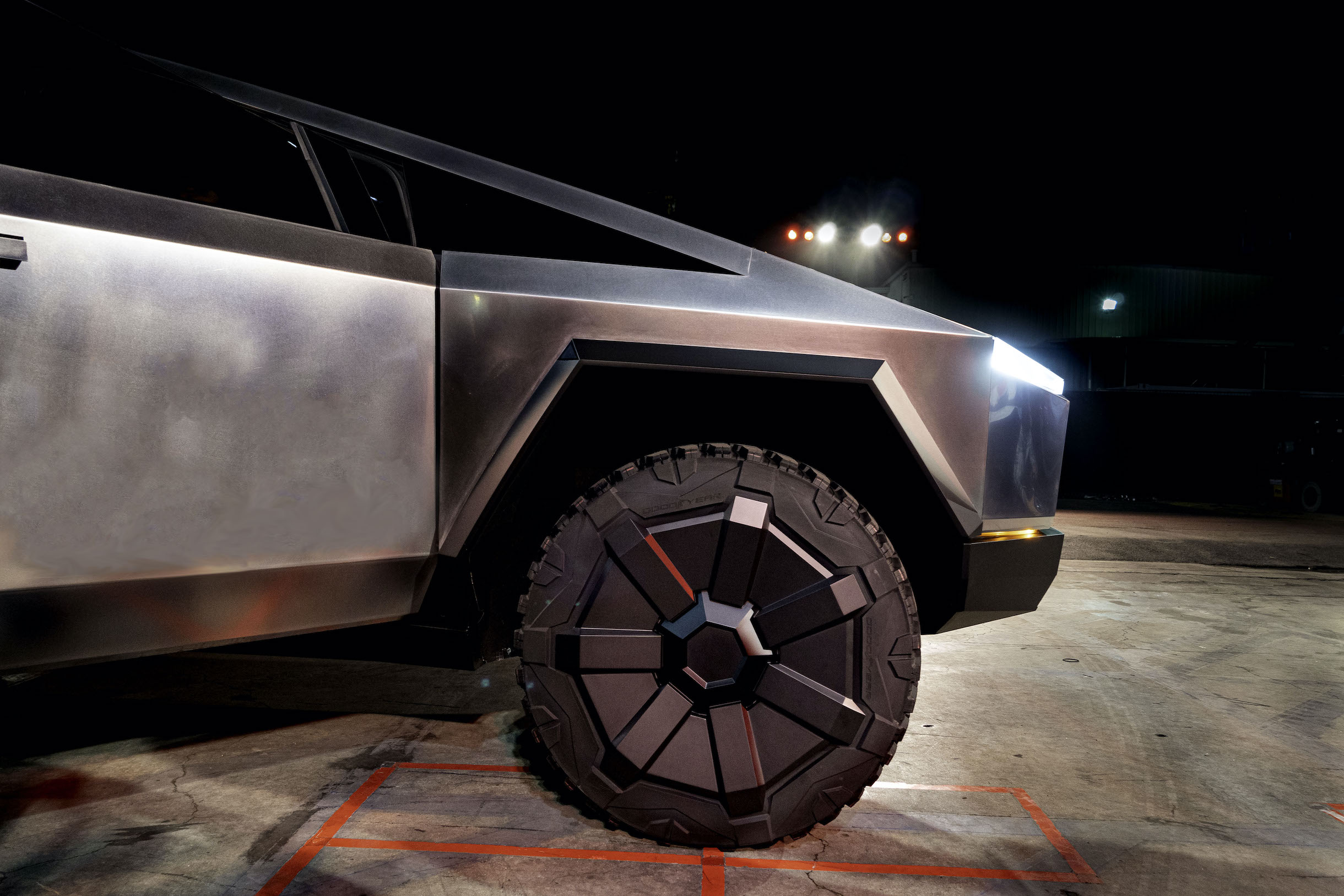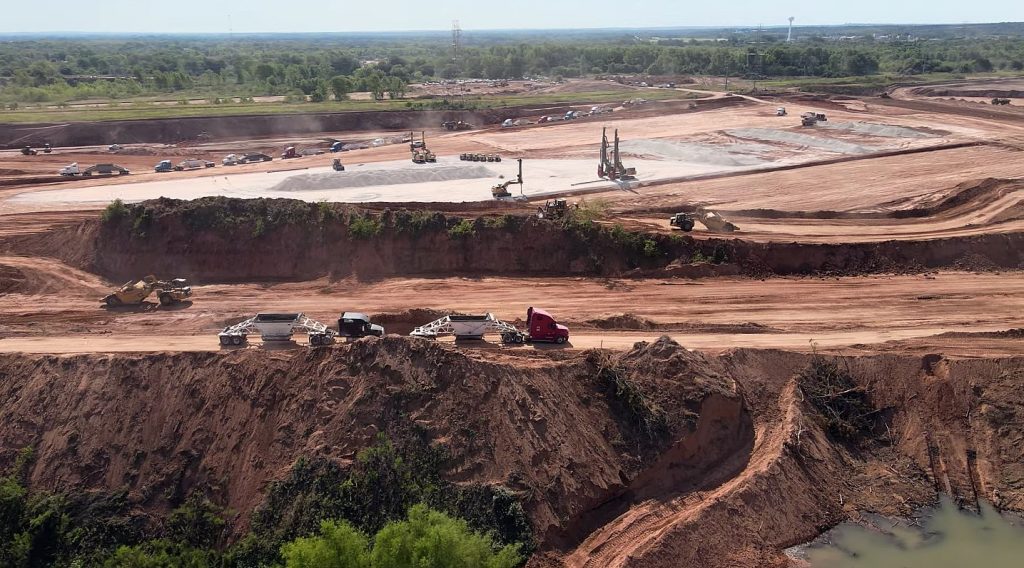

News
Tesla Cybertruck poised to start trial production runs in Giga Texas in May 2021
Tesla’s Gigafactory Texas is being built in an incredibly rapid manner, seemingly matching or perhaps even exceeding the pace of Gigafactory Berlin, which is looking to start Model Y production next year. If a recent presentation from Tesla is any indication, it appears that the expedited activities in the Giga Texas complex are intended, as the company seems to be looking to start the Cybertruck’s trial production as early as May 2021.
Tesla recently presented its “Travis County Colorado River Project Partner Pre‐Qualification Presentation,” which included a rough timeframe for the upcoming Cybertruck and Semi factory. The presentation, which was posted on the website of the City of Austin and shared by Tesla Motors Club member hridge20, revealed that Giga Texas’ “First Dry-In” is set for December 30, 2020, and its “First Substantial Completion” is scheduled for May 1, 2021.
As noted in an Inspectapedia post, “dry-in” typically means that a building’s shell has been completed to a sufficient degree, allowing the facility and its interior to avoid damage from rain, wind, and other weather-related factors. At the dry-in stage, the installation of weather-sensitive materials and equipment could commence, which, in Tesla’s case, may refer to the Cybertruck’s production equipment.

“First Substantial Completion,” on the other hand, refers to the stage when a construction project is completed to a degree where it could be used for its intended purpose. With this in mind, it appears that Tesla is looking to have the installation of the Cybertruck’s production equipment done by May, allowing the company to start trial runs of the all-electric pickup truck before the end of the second quarter of 2021.
Granted, this is a very aggressive target. However, the equipment for the Cybertruck’s production line may require less time to set up compared to the Model 3 and Model Y line in Fremont and Shanghai, since the vehicle will use no stamping machines due to its XY design. The Cybertruck will not need a paint shop either, thanks to its steel exoskeleton.
If Tesla’s recent presentation proves accurate, the company could definitely be on pace to hit its self-imposed target for the start of Cybertruck deliveries. Currently, Tesla estimates that Cybertruck deliveries could begin in late 2021, with the Tri-Motor AWD and Dual-Motor AWD variants being rolled out first. The base Cybertruck, which will cost less than $40,000, is expected to be rolled out the following year.
Considering the targets outlined in Tesla’s recent Travis County presentation and the Cybertruck’s estimated delivery dates, it appears that the electric car maker is actually adopting a pretty conservative rollout target for the all-electric pickup. If trial production could begin in May 2021, after all, Tesla will have the rest of the year to refine and release the Cybertruck. Starting trial production in the second quarter of 2021 also allows the company to gain some momentum in the EV market, which could be strategic considering that the first all-electric pickup, the Rivian R1T, is poised to start deliveries in June 2021.
Tesla’s “Travis County Colorado River Project Partner Pre‐Qualification Presentation” could be accessed below.
Tesla Partner Prequalification Presentation- August 27 2020 by Simon Alvarez on Scribd

News
Tesla FSD fleet is nearing 7 billion total miles, including 2.5 billion city miles
As can be seen on Tesla’s official FSD webpage, vehicles equipped with the system have now navigated over 6.99 billion miles.

Tesla’s Full Self-Driving (Supervised) fleet is closing in on almost 7 billion total miles driven, as per data posted by the company on its official FSD webpage.
These figures hint at the massive scale of data fueling Tesla’s rapid FSD improvements, which have been quite notable as of late.
FSD mileage milestones
As can be seen on Tesla’s official FSD webpage, vehicles equipped with the system have now navigated over 6.99 billion miles. Tesla owner and avid FSD tester Whole Mars Catalog also shared a screenshot indicating that from the nearly 7 billion miles traveled by the FSD fleet, more than 2.5 billion miles were driven inside cities.
City miles are particularly valuable for complex urban scenarios like unprotected turns, pedestrian interactions, and traffic lights. This is also the difference-maker for FSD, as only complex solutions, such as Waymo’s self-driving taxis, operate similarly on inner-city streets. And even then, incidents such as the San Francisco blackouts have proven challenging for sensor-rich vehicles like Waymos.
Tesla’s data edge
Tesla has a number of advantages in the autonomous vehicle sector, one of which is the size of its fleet and the number of vehicles training FSD on real-world roads. Tesla’s nearly 7 billion FSD miles then allow the company to roll out updates that make its vehicles behave like they are being driven by experienced drivers, even if they are operating on their own.
So notable are Tesla’s improvements to FSD that NVIDIA Director of Robotics Jim Fan, after experiencing FSD v14, noted that the system is the first AI that passes what he described as a “Physical Turing Test.”
“Despite knowing exactly how robot learning works, I still find it magical watching the steering wheel turn by itself. First it feels surreal, next it becomes routine. Then, like the smartphone, taking it away actively hurts. This is how humanity gets rewired and glued to god-like technologies,” Fan wrote in a post on X.
News
Tesla starts showing how FSD will change lives in Europe
Local officials tested the system on narrow country roads and were impressed by FSD’s smooth, human-like driving, with some calling the service a game-changer for everyday life in areas that are far from urban centers.

Tesla has launched Europe’s first public shuttle service using Full Self-Driving (Supervised) in the rural Eifelkreis Bitburg-Prüm region of Germany, demonstrating how the technology can restore independence and mobility for people who struggle with limited transport options.
Local officials tested the system on narrow country roads and were impressed by FSD’s smooth, human-like driving, with some calling the service a game-changer for everyday life in areas that are far from urban centers.
Officials see real impact on rural residents
Arzfeld Mayor Johannes Kuhl and District Administrator Andreas Kruppert personally tested the Tesla shuttle service. This allowed them to see just how well FSD navigated winding lanes and rural roads confidently. Kruppert said, “Autonomous driving sounds like science fiction to many, but we simply see here that it works totally well in rural regions too.” Kuhl, for his part, also noted that FSD “feels like a very experienced driver.”
The pilot complements the area’s “Citizen Bus” program, which provides on-demand rides for elderly residents who can no longer drive themselves. Tesla Europe shared a video of a demonstration of the service, highlighting how FSD gives people their freedom back, even in places where public transport is not as prevalent.
What the Ministry for Economic Affairs and Transport says
Rhineland-Palatinate’s Minister Daniela Schmitt supported the project, praising the collaboration that made this “first of its kind in Europe” possible. As per the ministry, the rural rollout for the service shows FSD’s potential beyond major cities, and it delivers tangible benefits like grocery runs, doctor visits, and social connections for isolated residents.
“Reliable and flexible mobility is especially vital in rural areas. With the launch of a shuttle service using self-driving vehicles (FSD supervised) by Tesla in the Eifelkreis Bitburg-Prüm, an innovative pilot project is now getting underway that complements local community bus services. It is the first project of its kind in Europe.
“The result is a real gain for rural mobility: greater accessibility, more flexibility and tangible benefits for everyday life. A strong signal for innovation, cooperation and future-oriented mobility beyond urban centers,” the ministry wrote in a LinkedIn post.
News
Tesla China quietly posts Robotaxi-related job listing
Tesla China is currently seeking a Low Voltage Electrical Engineer to work on circuit board design for the company’s autonomous vehicles.

Tesla has posted a new job listing in Shanghai explicitly tied to its Robotaxi program, fueling speculation that the company is preparing to launch its dedicated autonomous ride-hailing service in China.
As noted in the listing, Tesla China is currently seeking a Low Voltage Electrical Engineer to work on circuit board design for the company’s autonomous vehicles.
Robotaxi-specific role
The listing, which was shared on social media platform X by industry watcher @tslaming, suggested that Tesla China is looking to fill the role urgently. The job listing itself specifically mentions that the person hired for the role will be working on the Low Voltage Hardware team, which would design the circuit boards that would serve as the nervous system of the Robotaxi.
Key tasks for the role, as indicated in the job listing, include collaboration with PCB layout, firmware, mechanical, program management, and validation teams, among other responsibilities. The role is based in Shanghai.
China Robotaxi launch
China represents a massive potential market for robotaxis, with its dense urban centers and supportive policies in select cities. Tesla has limited permission to roll out FSD in the country, though despite this, its vehicles have been hailed as among the best in the market when it comes to autonomous features. So far, at least, it appears that China supports Tesla’s FSD and Robotaxi rollout.
This was hinted at in November, when Tesla brought the Cybercab to the 8th China International Import Expo (CIIE) in Shanghai, marking the first time that the autonomous two-seater was brought to the Asia-Pacific region. The vehicle, despite not having a release date in China, received a significant amount of interest among the event’s attendees.








